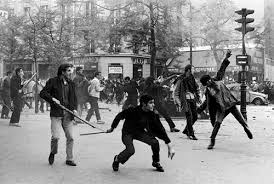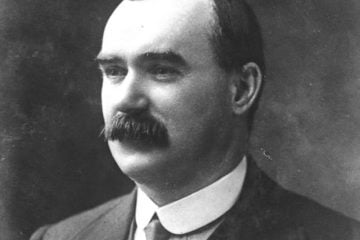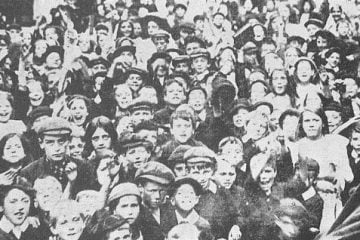In British schools the systematic exploitation and oppression of the Irish people over eight centuries is ignored. Ireland has been subject to conquest and reconquest by its English neighbour since Norman times. The rise of capitalism in England gave these conquests a savage character.
It was the English Revolution of 1642-1649 that brought the English capitalists to power. Oliver Cromwell and the New Model Army led a revolution that ended in the proclamation of a Republic. The radical, plebeian ranks of the New Model Army wanted to go much further, however. The ‘Levellers’, as they were called, demanded the fullest possible democracy. Some even called for a communistic distribution of property.
Cromwell was not prepared to stomach such demands. In order to smother the revolutionary elements in the New Model Army, he tied them up in a war in Ireland. As well as being a horrific tragedy for Ireland, the conquest ensured the victory of counter-revolution and Restoration in England.
Cromwell engaged in a ruthless campaign, resulting in the deaths of up to 40% of the Irish population. After besieging the town of Drogheda in September 1649, Cromwell’s troops slaughtered an estimated 2,000 people, including civilians.
Ethnic cleansing followed the slaughter. The 1652 Act of Settlement decreed that the people of Ulster, Leinster and Munster were to be ‘transplanted’ west of the River Shannon into counties Connaught and Clare, on pain of death. They were to make way for a new wave of largely English and Protestant landowners.
As a result of this counter-revolutionary war, a wave of speculators made large fortunes. Ireland came to be completely dominated by a class of absentee English landlords, and a host of parasitic middlemen that stood between them and the tenants.
Ireland once again erupted into open conflict during the Williamite Wars of 1688-1691. Much unionist mythology has been weaved out of this war. It is presented as a fight between ‘freedom-loving’ Protestants and the ‘authoritarian’ Catholics. The conflict was really a struggle within the ruling class. One section fought to retain the avowed Catholic, James II, as king; while the majority of the capitalists supported the seizure of the English throne by the Dutch adventurer, William of Orange.
Isolated in England, James fled to France, later returning to Ireland where he sought to find a base from which to reconquer his throne. The Irish masses had no stake in this conflict. Whichever side won, the abysmal economic situation of the poor would not improve.
Triumphant in the war, William sought to prevent the Irish masses from rearing their heads again. Using the tactic of divide and rule, which the British ruling class came to master, Penal Laws were passed that targeted Catholics and also Presbyterians. The Anglican Church, the church of the landowners and aristocrats, was proclaimed as the official church in Ireland.
In the late 18th Century, the French Revolution ignited the accumulated anger of the Protestant and Catholic poor. Inspired by its revolutionary democratic spirit, the Society of United Irishmen was formed in October 1791. It stood for Irish independence, which it correctly saw as unachievable without a social revolution. To do so, it sought to unite the Irish masses across the religious divide.
In County Armagh ongoing disputes over land had been whipped up by agents of the landlords and the middlemen to drive up rents. This led to violence between armed groups of Protestant farmers called the ‘Peep o’ Day Boys’ and armed Catholics known as the ‘Defenders’. Through their agitation, the United Irishmen succeeded in uniting these groups to fight for their common interests. Violence subsided.
Wolfe Tone, the leader of the United Irishmen, appealed directly to ‘the men of no property’ – the Irish workers and poor. Such a revolutionary message attracted the Irish masses, and by 1797 the United Irishmen had 200,000 members, Catholic and Protestant alike. The British ruling class were terrified of the prospect of revolution in Ireland, which could easily spread to Britain.
To destroy the revolutionary threat, the government once again employed sectarianism. Declaring the largely Protestant-led United Irishmen to be Catholic plot, the British state revived violence between the Peep o’ Day Boys and the Defenders. Out of the violence, the Orange Order was forged in 1795 as a cross-class Protestant alliance designed to forestall revolution.
To terrorise the Catholic poor and further drive them away from the Protestant poor, the Order carried out pogroms against Catholics. In County Armagh alone, over 7,000 Catholics were expelled in 1795.
Two failed uprisings by the United Irishmen in 1798 were brutally suppressed by the British state. To prevent such a rising from happening again, an example needed to be set. Rebels who surrendered or were captured were executed. Wolfe Tone was sentenced to death by hanging but committed suicide in prison. His example nevertheless remains an inspiration for revolutionaries in Ireland and beyond to this day.




0 Comments